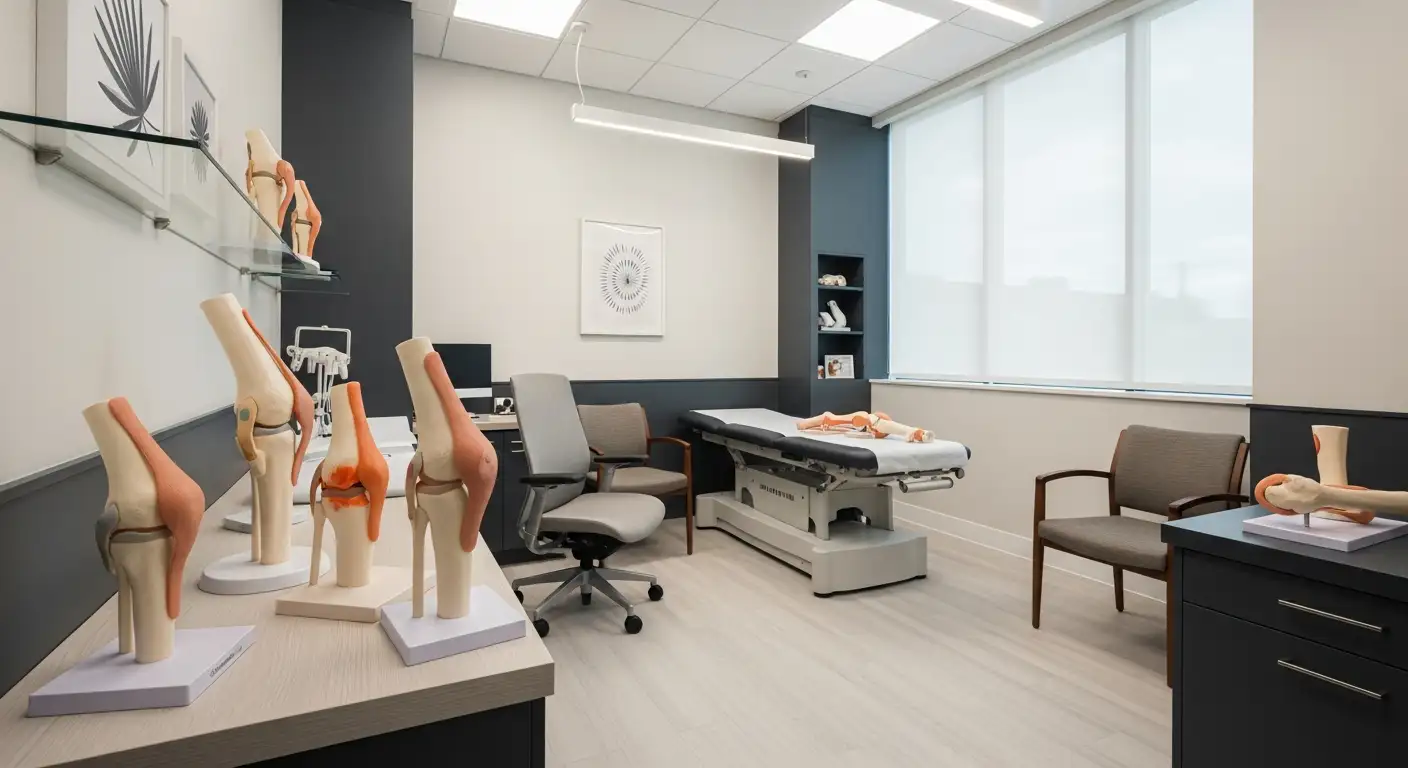Introduction to Leg Locking in Grappling Sports
Leg locking is a fundamental yet complex aspect of modern grappling, encompassing a variety of techniques designed to control and submit opponents by targeting the lower limbs. With a rich history spanning over two and a half millennia, leg locks have evolved from ancient combat systems like Pankration to become pivotal in contemporary martial arts such as Brazilian Jiu-Jitsu, Sambo, catch wrestling, and mixed martial arts (MMA). This article explores the nuances of leg locking, its techniques, strategic considerations, safety precautions, and its role across different martial disciplines.
Understanding Leg Locking and Its Significance
What is leg locking in grappling and martial arts?
Leg locking is a set of techniques used in martial arts and grappling sports such as Brazilian Jiu-Jitsu, Sambo, catch wrestling, and mixed martial arts. These techniques involve applying holds or locks on an opponent’s lower limbs—mainly the ankles, knees, or hips—to control, subdue, or submit them.
There are various types of leg locks, each targeting specific joints. Common examples include ankle locks, knee bars, toe holds, and heel hooks. These are executed from different positions like Ashi Garami, 50/50 guard, or Sankaku, which provide leverage and control for effective application.
Historically, leg locks have ancient roots, appearing over 2,500 years ago in Pankration, an ancient Greek Olympic combat sport. Over centuries, they have evolved into sophisticated techniques utilized in modern grappling competitions.
In recent years, leg locks gained prominence through their aggressive and effective nature, especially in Brazilian Jiu-Jitsu, where practitioners use them for quick submissions. While initially viewed as dangerous or taboo, today they are integrated into regular competitive strategies, emphasizing control, safety, and technical mastery.
Mastering leg locks not only broadens a grappler’s arsenal but also allows for rapid offense. Their effectiveness makes them valuable tools for practitioners of all skill levels, capable of turning the tide of a match with well-executed submissions.
Key Techniques and Positions in Leg Lock Game

What are common leg lock techniques and positions?
Leg locks encompass a variety of submissions targeting the joints of the leg, such as the ankle, knee, and hip. Among the most widely used techniques are the straight ankle lock (also known as the Achilles lock), heel hook, knee bar, and toe hold. Each of these attacks aims at different joint vulnerabilities and requires specific positioning.
The straight ankle lock involves overhooking the opponent's leg at the Achilles tendon and applying upward pressure to hyperextend the ankle. This fundamental move is popular in both gi and no-gi Brazilian Jiu-Jitsu, often introduced at beginner levels.
Heel hooks twist the ankle transversely and generate substantial torque, making them highly effective but also dangerous if not applied carefully. Knee bars hyperextend the knee joint and are considered effective lever techniques. The toe hold involves grabbing the foot near the toes with a figure-four grip, twisting and hyperextending the ankle.
These leg locks are typically executed from specific positional frameworks. The Ashi Garami position, such as the single leg x-guard, is critical for isolating the opponent's leg, allowing for attack setups. Outside ashigari, where both feet are outside the opponent’s legs, provides control and leverage for attacking multiple leg joints.
The 50/50 guard, with crossing legs, gives practitioners the ability to attack both legs or defend while attacking. The ‘leg knot’ or 'game over' position involves controlling the opponent’s legs with various grips and hooks, creating opportunities for different submissions.
Positions like inside sankaku (inside triangle) and outside sankaku (outside triangle), along with modern frameworks like 5050 and backside 5050, offer versatile control points for applying leg locks. Securing advantageous positions often involves controlling the secondary leg, preventing the opponent's movement, and establishing dominant angles.
Effective leg lock application depends on precise control and leverage. The practitioner must immobilize the leg, control the pelvis, prevent counter-attacks, and ensure proper leg positioning—whether bent or straight. Training these techniques involves understanding where to apply pressure, how to transition between positions, and how to defend against defenses.
In essence, mastering the primary leg lock techniques within various strategic positions creates a robust and diverse grappling game, essential for success in competition and self-defense scenarios.
Historical and Cultural Roots of Leg Locks

How has leg locking been used historically in combat sports?
The technique of leg locking has a long and storied history, dating back over 2,500 years. Evidence suggests that these joint locks were used in ancient combat sports such as Pankration, an early Olympic martial art that combined elements of striking and grappling.
In these ancient contests, fighters employed leg locks to immobilize or submit opponents by targeting joints like the ankle, knee, and hip. These early applications demonstrated the strategic value of leg locks, making them a vital part of a warrior’s arsenal in hand-to-hand combat.
Over centuries, the use of leg locks spread through different cultures, evolving into sophisticated techniques within traditional martial arts systems. In modern times, they’ve become integral to many competitive sports, especially Brazilian Jiu-Jitsu, catch wrestling, and mixed martial arts.
Today, the historical importance of leg locks highlights their effectiveness not just as submission moves but also as tactical tools used in warfare and sport. Their longevity reflects their adaptability and enduring relevance across various martial arts disciplines.
For more insights on this topic, you can search for "history of leg locks in ancient martial arts and combat sports."
Positioning and Control for Effective Leg Lock Application

What are common positional frameworks used in leg locking?
In leg locking, certain positions provide strategic advantages for both attack and defense. The Ashi Garami, for example, is a foundational position where the attacker controls one of the opponent's legs, enabling attacks like heel hooks or kneebars. Variations such as inside Ashi and outside Ashi offer different angles and attack options.
Other important positions include the 50/50, where both practitioners have their legs intertwined, allowing for offensive opportunities like heel hooks but also requiring careful control to avoid counterattacks. The backside 50/50, inside sankaku, and outside sankaku are more specialized positions that facilitate control over the opponent’s leg while minimizing escape options.
Here's a simplified overview of common positions:
| Position | Description | Main Attacks | Vulnerabilities |
|---|---|---|---|
| Ashi Garami | One leg trapped, control at ankle or knee | Heel hooks, kneebars | Opponent can attempt grip escapes |
| 50/50 | Equally entangled legs, both controlling the ankle | Heel hooks, calf slicers | Risk of counterattacks from both sides |
| Inside Sankaku | Leg entanglement in a triangular shape | Knee bars, heel hooks | Vulnerable to positional escapes |
| Outside Sankaku | Leg triangle outside the opponent's leg | Heel hooks | Easier to lose control without proper grips |
How do positional frameworks influence attack and defense?
Controlling these positions is crucial for executing effective submissions and preventing counterattacks. For example, locking the hips and controlling the secondary leg helps maintain pressure and limits the opponent’s movements.
Successful leg lock application involves strategic transitions between these positions to create openings while keeping the opponent's defenses in check. Proper grip control, body positioning, and maintaining pressure are vital elements that dictate the success of the attack.
What strategic considerations and counters are important in leg locking?
Effective leg locking hinges on controlling key positions like the Ashi Garami, 50/50, and Inside Lockup to create threat and restrict opponent mobility. It's essential to keep tight control over the legs and hips, applying pressure to set up submissions like heel hooks or knee bars.
Countering involves escaping or reversing positions through grip releases, positional escapes, or counters such as transitioning to dominant positions like side control or back control. Recognizing when an opponent is setting up a leg lock and responding promptly—either by defending or counterattacking—is fundamental.
For example, if an opponent tries a heel hook from the 50/50, a counterattack might include rolling out or switching to a safer position. Similarly, breaking grips in the Inside Sankaku can prevent submission attempts.
Final thoughts
Mastering positional control is essential to both attack effectively and defend against leg locks. Awareness of the dynamic interactions within key positions, combined with precise control, can turn the tide in a grappling match. Whether employing an inside-out approach from John Danaher’s system or outside-in strategies like Lachlan Giles’, flexible adaptation to the opponent's reactions and maintaining strategic pressure will determine success.
Safety Guidelines and Ethical Practice in Leg Lock Training

How can I safely practice leg locks and avoid injury?
Practicing leg locks safely is essential for effective training and injury prevention. One of the main steps is understanding the detailed anatomy of the knee and ankle joints, including the ligaments such as the ACL, PCL, MCL, and LCL, which are often affected during these techniques.
Gradual progression is crucial. Beginners should start with controlled, lighter applications of techniques like ankle locks and knee bars, focusing on precise technique rather than brute force. It’s important to maintain control throughout the lock to avoid excessive pressure or torque that could cause injury.
Clear communication with training partners is vital. Using a tapping system where the partner signals when a submission is painful or uncomfortable helps prevent serious injuries. Respect for each other's safety fosters a responsible training environment.
Supervision by experienced coaches can guide proper technique and prevent unsafe practices. Following structured safety protocols, including proper warm-up and stretching routines, prepares the joints and muscles for intense movements.
Awareness of the mechanics involved in each leg lock, like heel hooks and knee reaps, enables practitioners to apply techniques more safely. Proper positioning, such as controlling the opponent’s secondary leg and avoiding overextension, decreases the risk of injury.
Additionally, increasing training intensity gradually and consistently revisiting fundamental techniques help develop good habits and resilience. Remember, the goal of leg lock training is to improve skill while prioritizing health and well-being.
In conclusion, safe practice involves understanding anatomy, progressing slowly, communicating openly, and practicing under expert supervision. Doing so ensures injury prevention while allowing practitioners to develop a comprehensive grappling game.
Leg Locks Across Different Martial Art Disciplines

How do leg locks differ across martial arts disciplines like Brazilian Jiu-Jitsu, MMA, and submission wrestling?
Leg locks are versatile techniques that vary significantly across different combat sports and martial arts due to their unique rules, strategic focuses, and allowed techniques.
In Brazilian Jiu-Jitsu (BJJ), leg locks have become increasingly prominent, especially at advanced levels. Traditionally, BJJ emphasized positional control and submissions involving the upper body, but recent rule changes and evolving strategies have brought leg locks, including heel hooks and knee bars, into mainstream competition. Lower belts often focus on fundamental submissions like straight ankle locks and kneebars, gradually progressing toward more complex and dangerous techniques as they advance.
Mixed Martial Arts (MMA) allows a broader range of leg attacks, reflecting its blend of striking, wrestling, and submission grappling. Fighters frequently use leg locks such as ankle locks, heel hooks, and knee bars to finish fights quickly. The permissive rules in MMA enable practitioners to apply techniques that are restricted in other competitions, making leg locks a potent but risky option. Proper application and timing are crucial, given the fight environment and the potential for strike retaliation.
Catch wrestling, one of the oldest grappling arts, emphasizes aggressive and opportunistic submission attacks. It permits more aggressive use of ankle locks, heel hooks, and knee bars, often with fewer restrictions. Catch wrestlers focus on quick submission setups, exploiting openings for leg attacks using relentless pressure and rapid transitions.
Submission wrestling, especially no-gi grappling, has popularized dynamic leg lock exchanges from various positions like the 50/50, inside sankaku, and outside sankaku. This discipline emphasizes rapid attacks, transitions, and the ability to switch between attacking and defending leg locks effectively. Its rule sets encourage aggressive leg lock strategies, often involving twisting and hyperextending techniques like heel hooks.
| Discipline | Common Techniques | Restrictions | Strategic Emphasis |
|---|---|---|---|
| Brazilian Jiu-Jitsu | Heel hooks, kneebars, straight ankle locks | Varies by belt level, often restricted for lower belts | Positional control, gradual progression |
| MMA | Ankle locks, heel hooks, knee bars | Permissive within regulatory limits; strikes allowed | Effectiveness, quick submissions |
| Catch Wrestling | Ankle locks, heel hooks, knee bars | Few restrictions, aggressive application | Quick, opportunistic submissions |
| Submission Wrestling | Heel hooks, inside/outside sankaku, toe holds | Governed by specific rules, often aggressive | Fast-paced attacks, positional transitions |
The differences are largely driven by rule restrictions and strategic goals. For example, BJJ's focus on safety and concours play a role in limiting certain techniques at lower levels. Conversely, MMA's open rules foster a more aggressive stance towards leg attacks, maximizing their fight-finishing potential. Understanding these distinctions allows practitioners to tailor their training and strategy according to the sport or discipline.
In sum, whether in BJJ, MMA, catch wrestling, or submission grappling, the variation in application methods, rules, and strategic emphasis underscores the adaptability and importance of leg locks across combat sports.
Training Resources and Methods to Enhance Leg Lock Skills
To get better at leg locks, using the right training tools and strategies is essential. Practical drills such as the Shin Box Switch, Sphinx Shoulder Pumps, and Sphinx Head Nods & Head Turns are highly effective. These exercises help improve hip mobility, control, and fundamental movement patterns, which are crucial for executing leg locks smoothly.
In addition to physical drills, studying instructional videos and online tutorials can provide visual guidance and detailed breakdowns of various leg lock techniques. Participating in structured classes that focus on specific submissions, such as straight foot locks, toe holds, knee bars, and heel hooks, allows for progressive learning and skill refinement.
Attending seminars led by experienced practitioners offers valuable insights and feedback. Observing and learning from experts enhances understanding of subtle technical nuances and safety precautions.
Strength training also plays a significant role. Building the muscles around the hips, core, and shoulders improves stability and leverage, making leg locks more effective.
Consistent practice under the supervision of knowledgeable instructors is vital. Drilling with live sparring and scenario-based training develops adaptability and confidence. Analyzing these situations helps practitioners refine timing, positioning, and defensive skills.
In summary, combining physical drills, educational resources, expert guidance, and strength conditioning creates a comprehensive approach to mastering leg locks, ensuring practitioners develop speed, control, and safety in their techniques.
Mastering Leg Locking: A Key Skill in Grappling Success
Leg locking is an integral part of the modern grappler’s arsenal, combining ancient techniques with contemporary tactical applications. Its effectiveness depends on a thorough understanding of various locks, strategic positioning, and safe practice. As martial arts continue to evolve, so does the role of leg locks across disciplines—from traditional martial arts to elite competitive sports. Developing proficiency in leg locking not only enhances submission potential but also diversifies a grappler’s overall game. Remember, safety and respect for your training partners are paramount, and continuous learning through drills, expert guidance, and understanding rules will elevate your skill and confidence in leg locking.
References
- Leglock - Wikipedia
- The Foundational Guide To Learning Leg Locks
- Leg-Locks 101 - The Jiu Jitsu Brotherhood
- Here Are The 5 Leg Locks You Need To Know - Evolve MMA
- The Foundational Guide To Learning Leg Locks
- Leg Locks, Cranks, and Chokes: The Techniques That Define Catch ...
- BJJ 101: Leg Locks - Evolve MMA
- Ultimate Guide: BJJ Leg Locks Escape - Elite Sports
- Discover the history and rise of leg locks in grappling sports.





